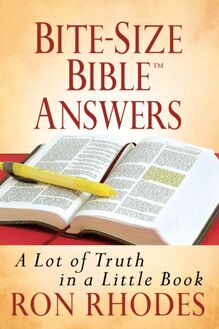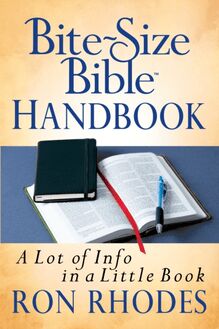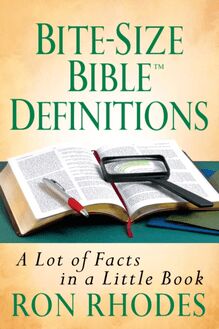-
 Univers
Univers
-
 Ebooks
Ebooks
-
 Livres audio
Livres audio
-
 Presse
Presse
-
 Podcasts
Podcasts
-
 BD
BD
-
 Documents
Documents
-
- Cours
- Révisions
- Ressources pédagogiques
- Sciences de l’éducation
- Manuels scolaires
- Langues
- Travaux de classe
- Annales de BEP
- Etudes supérieures
- Maternelle et primaire
- Fiches de lecture
- Orientation scolaire
- Méthodologie
- Corrigés de devoir
- Annales d’examens et concours
- Annales du bac
- Annales du brevet
- Rapports de stage
La lecture à portée de main
Vous pourrez modifier la taille du texte de cet ouvrage
Découvre YouScribe en t'inscrivant gratuitement
Je m'inscrisDécouvre YouScribe en t'inscrivant gratuitement
Je m'inscrisEn savoir plus
Vous pourrez modifier la taille du texte de cet ouvrage
En savoir plus

Description
Sujets
Informations
| Publié par | Harvest House Publishers, Inc. |
| Date de parution | 01 février 2012 |
| Nombre de lectures | 0 |
| EAN13 | 9780736944847 |
| Langue | English |
Informations légales : prix de location à la page 0,0323€. Cette information est donnée uniquement à titre indicatif conformément à la législation en vigueur.
Extrait
HARVEST HOUSE PUBLISHERS EUGENE, OREGON
All Scripture quotations are taken from The Holy Bible, New International Version NIV . Copyright 1973, 1978, 1984, 2011 by Biblica, Inc. Used by permission. All rights reserved worldwide.
Cover by Dugan Design Group, Bloomington, Minnesota
Cover photo Dugan Design Group
BITE-SIZE BIBLE is a trademark of The Hawkins Children s LLC. Harvest House Publishers, Inc. is the exclusive licensee of the trademark BITE-SIZE BIBLE.
BITE-SIZE BIBLE HANDBOOK
Copyright 2012 by Ron Rhodes
Published by Harvest House Publishers
Eugene, Oregon 97402
www.harvesthousepublishers.com
ISBN 978-0-7369-4483-0 (pbk.)
ISBN 978-0-7369-4484-7 (eBook)
All rights reserved . No part of this publication may be reproduced, stored in a retrieval system, or transmitted in any form or by any means-electronic, mechanical, digital, photocopy, recording, or any other-except for brief quotations in printed reviews, without the prior permission of the publisher.
Printed in the United States of America
12 13 14 15 16 17 18 / BP-NI / 10 9 8 7 6 5 4 3 2 1
To my beloved Kerri
Acknowledgments
In Proverbs 31:10 we read, A wife of noble character who can find? She is worth far more than rubies. I am thankful to have married a Proverbs 31 wife. Without her, I could never accomplish all that I do in ministry. Thanks, Kerri!
Psalm 127:3 indicates that children are a gift from the Lord. I am privileged to be doubly gifted with two grown children, David and Kylie. I praise the Lord for both!
Finally, as always, I am thankful to all my friends at Harvest House Publishers. Partnering with you through the years has been a pleasure.
Contents
Acknowledgments
Fast Facts on Interpreting the Bible
T HE O LD T ESTAMENT
Introduction to the Old Testament
Genesis
Exodus
Leviticus
Numbers
Deuteronomy
Joshua
Judges
Ruth
1 Samuel
2 Samuel
1 Kings
2 Kings
1 Chronicles
2 Chronicles
Ezra
Nehemiah
Esther
Job
Psalms
Proverbs
Ecclesiastes
Song of Solomon
Isaiah
Jeremiah
Lamentations
Ezekiel
Daniel
Hosea
Joel
Amos
Obadiah
Jonah
Micah
Nahum
Habakkuk
Zephaniah
Haggai
Zechariah
Malachi
T HE N EW T ESTAMENT
Introduction to the New Testament
Matthew
Mark
Luke
John
Acts
Romans
1 Corinthians
2 Corinthians
Galatians
Ephesians
Philippians
Colossians
1 Thessalonians
2 Thessalonians
1 Timothy
2 Timothy
Titus
Philemon
Hebrews
James
1 Peter
2 Peter
1 John
2 John
3 John
Jude
Revelation
Staying Anchored in God s Word
More Bite-Size Bible Books from Ron Rhodes and Harvest House Publishers
Fast Facts on Interpreting the Bible
To properly understand God s Word, we must pay attention to a few important rules of interpretation. If we faithfully follow them, they will help us grasp the intended meaning of the biblical writers.
Do not force a meaning into the text . What a passage means was fixed by the author and is not subject to alteration by readers. The authors determined the meaning; we readers discover it.
Pay attention to context . Individual verses do not exist as isolated fragments, but as parts of the whole of Scripture. The exposition of these individual verses, therefore, must present them in right relation to the rest of Scripture. To put it simply, Scripture interprets Scripture.
Make a correct genre judgment . The Bible contains a variety of literary genres, including parables, history, poetry, law, apocalyptic literature, and many others. Each of these genres has unique characteristics that we must recognize in order to interpret the text properly. For example, parables (stories) should not be treated as law, nor should poetry or apocalyptic literature (which has many symbols) be treated as history.
Consult history and culture . To interpret Scripture, we must step out of our twenty-first-century Western mind-set and into a first-century Jewish mind-set. (This handbook will help you do this.)
Lay hold on the Bible until the Bible lays hold on you .
W ILLIAM H. H OUGHTON (1887-1947) FOURTH PRESIDENT OF M OODY B IBLE I NSTITUTE
Interpret the Old Testament in light of the New Testament . By approaching the Old Testament through the greater light of the New Testament, we better understand the broad perspective of the Old Testament.
Distinguish between the descriptive and the prescriptive . Is a verse merely describing something that took place in biblical times, or is it prescribing something that Christians should be doing for all time?
Recognize that the Bible uses the language of appearances . Ecclesiastes 1:5, for example, says the sun rises and sets. Though not scientifically correct, such terminology was (and is) an accepted way of describing what the sun appears to be doing from an earthly perspective.
When the plain sense makes good sense, seek no other sense lest you end up in nonsense . Enough said!
Now that we have summarized some important interpretive principles, we re ready to survey each book in the Bible. This little handbook will provide you with the big picture or main message in each Bible book.
The Old Testament
Introduction to the Old Testament
The word testament refers to a covenant, or agreement. The Old Testament focuses on the old covenant between God and the Israelites. According to that covenant (the Sinai covenant), the Jews were to be God s people and be obedient to Him, and in return, God would bless them (Exodus 19:3-6). The various books of the Old Testament explain this old covenant and describe its outworking in history. Of course, Old Testament history reveals that Israel repeatedly disobeyed God, violating the covenant.
The Old Testament is the entire Hebrew Bible, but it is only part 1 of the Christian Bible. Jews question the designation Old Testament because of the implication that there must be a New Testament (a notion they reject). To them, the books that constitute the Old Testament comprise the entire Word of God. Christians, however, note that even in Old Testament times, the prophets began to speak of a new covenant that would focus not on external laws but on an inner reality and change in the human heart (Jeremiah 31:31; Ezekiel 36:26). Unlike the old covenant, the new covenant was to make full provision for the forgiveness of sins. This new covenant is the focus of the New Testament (see 1 Corinthians 11:25; 2 Corinthians 3:6; Hebrews 8:13).
The Old Testament is often divided into three parts: the law, the prophets, and the writings. The law includes the Torah, the first five books of the Old Testament, which were written by Moses-Genesis, Exodus, Leviticus, Numbers, and Deuteronomy. The prophets include the four major prophets (Isaiah, Jeremiah, Ezekiel, and Daniel), the twelve minor prophets, and most of the historical books. The writings include the rest of the Old Testament books, including Psalms, Proverbs, Job, and others.
Genesis
Author: Moses. This is confirmed by the rest of the Pentateuch (Exodus 17:14; Numbers 33:1-2; Deuteronomy 31:9), other Old Testament books (Joshua 1:7-8; 1 Kings 2:3; 2 Kings 14:6; Ezra 6:18; Daniel 9:11-13; Malachi 4:4), and the New Testament (Matthew 19:8; Mark 12:26; John 5:46-47; Romans 10:5).
Date: Written between 1445 and 1405 BC.
Book Title: Genesis means beginning. This book contains an account of the beginning of the world, the rest of the universe, and humankind.
Fast Facts
Genesis 1-11 documents the creation and then broadly traces humanity s self-destruction as people turn away from God. In Genesis 12-50, God zeroes in on one family-the line of Abraham, Isaac, and Jacob-through which all the other people of the earth would be blessed.
Summary Outline
1. Creation and the fall of humanity (1-3) . God created the entire universe, including the earth and mankind (1:26-27). Though Adam and Eve enjoyed a perfect living environment, they turned from God and catapulted the entire human race into sin (chapter 3).
2. The family of Adam and Eve (4-5) . The name Adam comes from a Hebrew word meaning humanity, which is appropriate because he represents humanity (1:26-27; 2:7,22-23). Eve means giver of life (3:20). Cain, their firstborn (4:1), murdered his righteous brother Abel out of resentment that God accepted Abel s sacrifice but not his (4:1-8). Cain was consequently exiled from Eden (4:9-15). Adam and Eve had many other children (4:25; 5:3-4).
3. Noah and the flood (6-9) . God flooded the earth because humankind became filled with violence and corruption (6:1-8). Noah was the only one who honored God (6:9). Noah s ark was about 450 feet long, 75 feet wide, and 45 feet high. In this vessel, a remnant of humanity (Noah and family) and two each of the various animals were preserved from the flood (6:14-9:18).
4. Early nations and the Tower of Babel (10-11) . After the flood, descendants of Noah s son Ham developed a wicked kingdom and began building the tower of Babel. This project was a pagan effort to observe and worship the heavens. God confounded the workers, causing them to speak different languages-thus the name Babel (confusion). This confusion caused them to scatter (11:1-9).
5. Abram and Sarah (12-25) . God commanded Abram to leave Ur and go to Canaan. With this command, God gave Abram a promise: His descendants would grow into a great nation that would be as numberless as the stars. God changed Abram s name to Abraham , meaning father of a multitude (17:5). God promised that this nation would bring blessing to all the nations (12:3). But Abraham was 100 years old, and Sarah was 90. How would they bear a son? In unbelief, Sarah offered Abraham her younger servant, Hagar, through whom Ishmael was born. But he was not the child of promise. God s promise was eventually fulfilled when Sarah became pregnant and Isaac was born.
6. Isaac and Rebekah (26:1-27:45) . Isaac married Rebekah. God reaffirmed His covenant with Isaac on two occasions (26:3-5,24-25)
-
 Univers
Univers
-
 Ebooks
Ebooks
-
 Livres audio
Livres audio
-
 Presse
Presse
-
 Podcasts
Podcasts
-
 BD
BD
-
 Documents
Documents
-
Jeunesse
-
Littérature
-
Ressources professionnelles
-
Santé et bien-être
-
Savoirs
-
Education
-
Loisirs et hobbies
-
Art, musique et cinéma
-
Actualité et débat de société
-
Jeunesse
-
Littérature
-
Ressources professionnelles
-
Santé et bien-être
-
Savoirs
-
Education
-
Loisirs et hobbies
-
Art, musique et cinéma
-
Actualité et débat de société
-
Actualités
-
Lifestyle
-
Presse jeunesse
-
Presse professionnelle
-
Pratique
-
Presse sportive
-
Presse internationale
-
Culture & Médias
-
Action et Aventures
-
Science-fiction et Fantasy
-
Société
-
Jeunesse
-
Littérature
-
Ressources professionnelles
-
Santé et bien-être
-
Savoirs
-
Education
-
Loisirs et hobbies
-
Art, musique et cinéma
-
Actualité et débat de société
- Cours
- Révisions
- Ressources pédagogiques
- Sciences de l’éducation
- Manuels scolaires
- Langues
- Travaux de classe
- Annales de BEP
- Etudes supérieures
- Maternelle et primaire
- Fiches de lecture
- Orientation scolaire
- Méthodologie
- Corrigés de devoir
- Annales d’examens et concours
- Annales du bac
- Annales du brevet
- Rapports de stage








